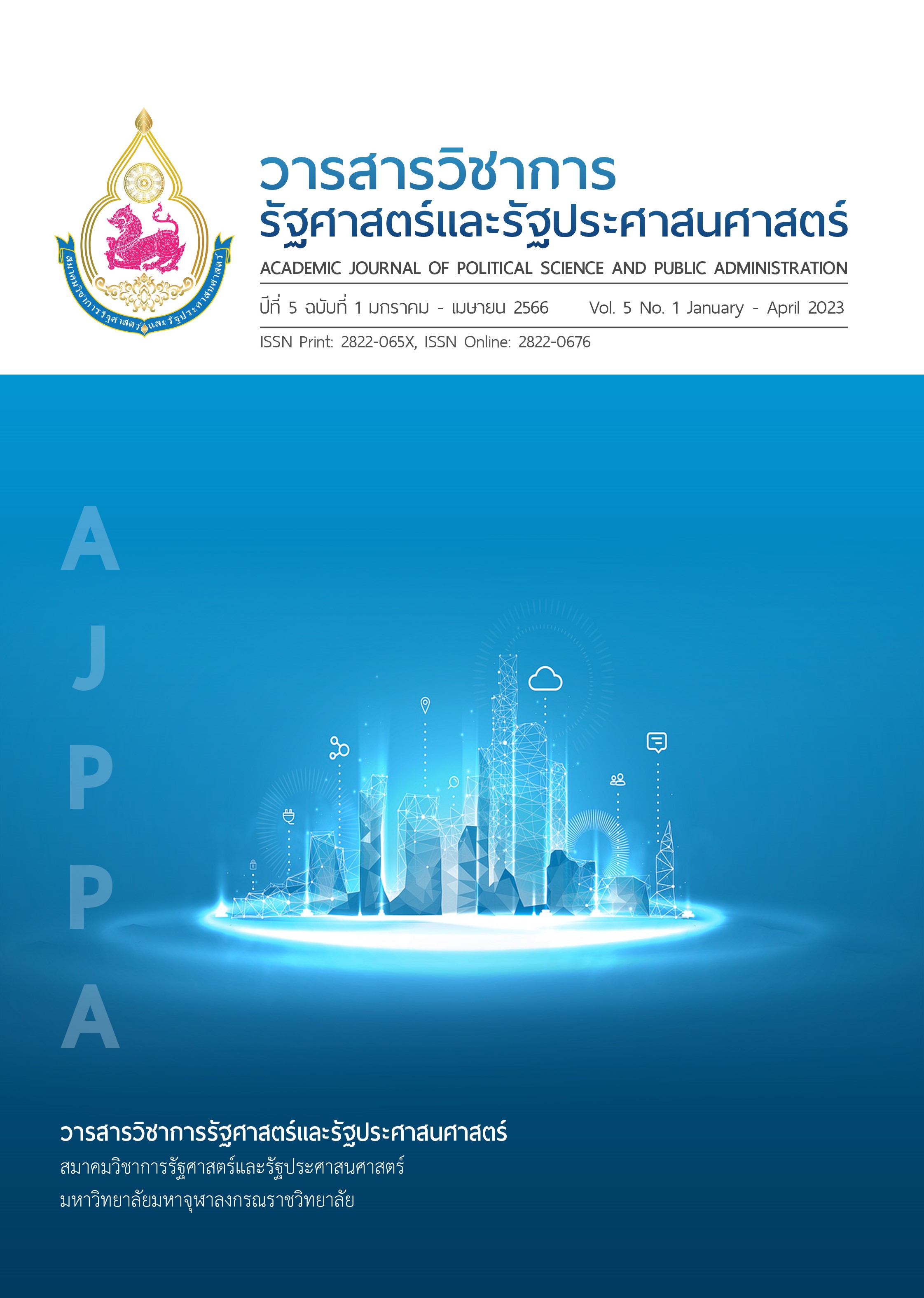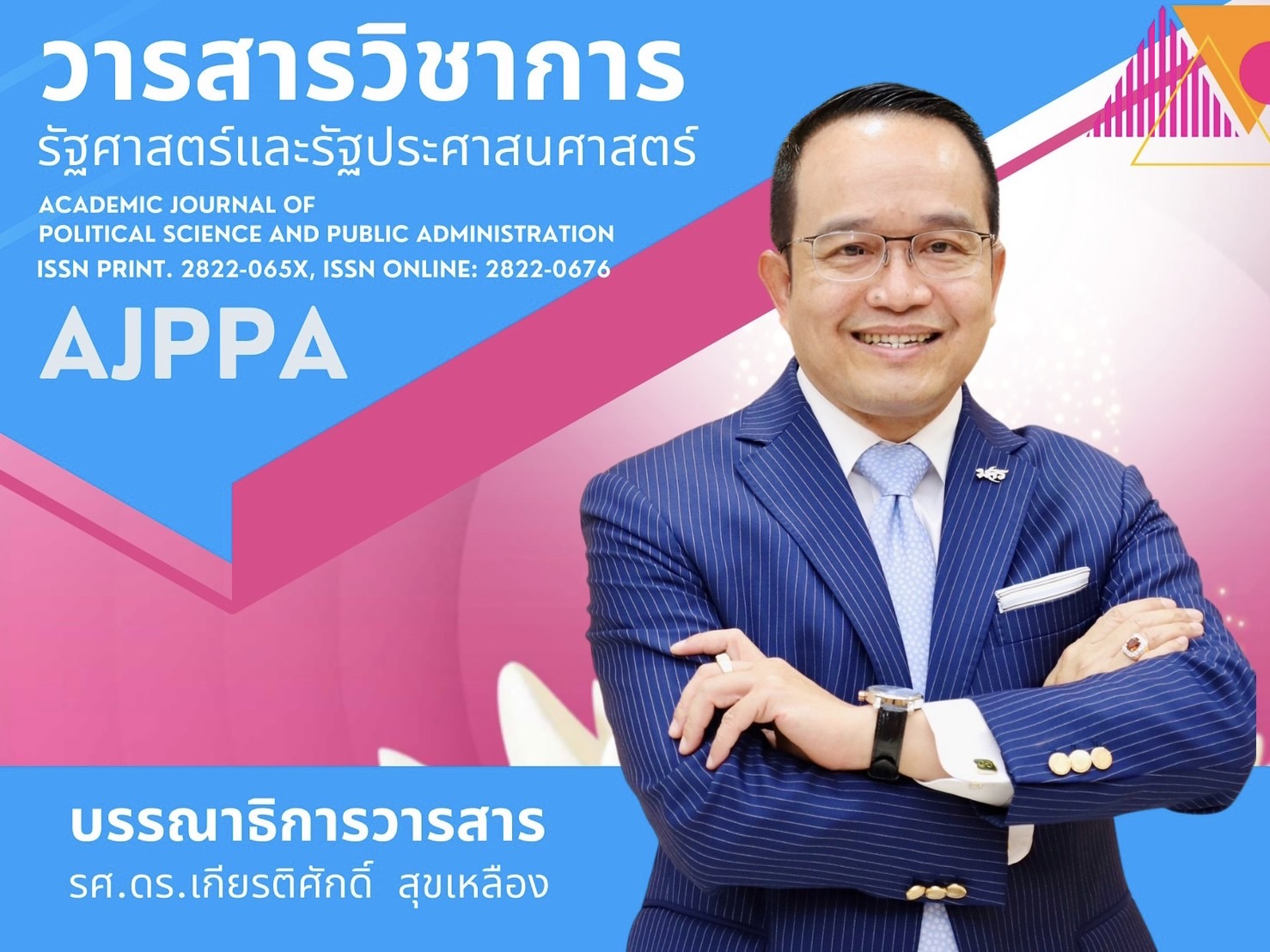การปรับองค์กรเพื่อรับมือคนเจนเนอเรชั่นวายในสังคมไทย
คำสำคัญ:
การปรับองค์กร, เจนเนอเรชั่นวาย, สังคมไทยบทคัดย่อ
การทำงานถือเป็นองค์ประกอบที่สำคัญอย่างมากเป็นสิ่งที่ทำให้มนุษย์แสดงออกทางพฤติกรรมการทำงานออกมาทุกด้าน องค์กรทุกแห่งย่อมต้องการให้องค์กรของตนเองนั้นมีความเจริญเติบโต มีความมั่นคง ปัจจัยที่สำคัญที่สุดในการจะทำให้องค์กรเจริญก้าวหน้านั้น คือบุคลากรที่ปฏิบัติงานให้กับองค์กร องค์กรเป็นเครื่องมือในการเปลี่ยนสังคม มีปัจจัยจากการตัดสินใจ การรับรู้ ค่านิยมที่ต่างกัน คนขององค์กรจึงเป็นฟันเฟืองที่สำคัญในการผลักดันให้องค์กรประสบความสำเร็จ กิจกรรมต่าง ๆ ที่คนดำเนินการเพื่อให้บรรลุเป้าหมายนั้นทำให้องค์กรกลายเป็นองค์กรที่มีชีวิต มีการสร้างการเรียนรู้ ทักษะและนวัตกรรม ปัจจุบันกลุ่มคนที่อยู่ร่วมกันในองค์กรมีความแตกต่างกันมาก เนื่องจากการเกิดในยุคสมัย หรือในช่วงเวลาที่แตกต่างกัน องค์กรจึงควรต้องรับมือกับการเปลี่ยนแปลงดังกล่าว เพื่อรักษาคนที่มีความรู้ความสามารถให้อยู่กับองค์การด้วยการเข้าใจคุณลักษณะของคน และทำการแปลงสภาพองค์กรให้สอดคล้องกับคนยุคใหม่ โดยเฉพาะคนในกลุ่มเจนเนอเรชั่นวาย (Gen Y) ซึ่งขณะได้เข้าสู่ระบบการทำงานและบางส่วนกำลังก้าวขึ้นเป็นระดับผู้บริหารองค์กร บทความนี้มีวัตถุประสงค์เขียนขึ้นเพื่อศึกษาและเปรียบเทียบการรับรู้คุณลักษณะของเจนเนอเรชั่นวายและการปรับองค์กรในการทำงานระหว่างเจนเนอเรชั่นต่าง ๆ ที่กำลังทำงานร่วมกันในองค์กรปัจจุบันในโลกของการทำงาน
เอกสารอ้างอิง
เดชา วัฒนะไพศาล. (2552). การรับรู้คุณลักษณะของเจนเนอเรชั่นวายและแรงจูงใจในการทำงาน: มุมมองระหว่าง เจนเนอเรชั่นต่าง ๆ ในองค์กร. จุฬาลงกรณ์ธุรกิจปริทัศน์, 31(121), 1-25.
ธรรมรัตน์ อยู่พรต. (2556). ค่านิยมในการทำงานที่ส่งผลต่อพฤติกรรมการเป็นสมาชิกที่ดีขององค์กรของเจนเนอเรชั่นต่าง ๆ. วารสารบริหารธุรกิจ, 36(138), 40-62.
นุช สัทธาฉัตรมงคล. (2562). การปรับองค์การเพื่อรับมือคนเจนเนอเรชั่นวาย. วารสาร ธุรกิจปริทัศน์. 11(2), 1-9.
พสุ เดชะรินทร์. (2551) ช่องว่างในการทำงานระหว่าง Gen X กับ Gen Y. กรุงเทพฯ: ผู้จัดการรายสัปดาห์.
มนัสวี ศรีนนท์, (2561). ทฤษฎีเจนเนอเรชั่นกับกรอบวิธีคิด. วารสาร “ศึกษาศาสตร์ มมร” คณะศึกษาศาสตร์ มหาวิทยาลัยมหามกุฏราชวิทยาลัย, 6(1), 364-373.
รัชฎา อสิสนธิสกุล และอ้อยอุมา รุ่งเรือง. (2548). การสร้างความเข้าใจร่วมเกี่ยวกับเจนเนอเรชั่นวาย (Generation Y) เพื่อประยุกต์ใช้ในที่ทำงาน (วิทยาศาสตร์มหาบัณฑิต สาขาวิชาการพัฒนาทรัพยากรมนุษย์และองค์การ) กรุงเทพฯ: สถาบันบัณฑิตพัฒนบริหารศาสตร์.
อัมพร ธำรงลักษณ์. (2556). องค์การ: ทฤษฎีโครงสร้างการออกแบบ. กรุงเทพฯ: สำนักพิมพ์มหาวิทยาลัยธรรมศาสตร์.
Chatman, J. A. (1989). Improving interactional organizational research: A model of person-organization fit. Academy of Management Review, 14(3), 333-349.
Glass, A. (2007). Understanding generational differences for competitive success. Industrial and Commercial Training, 39(2), 98-103.
Kapoor, C. & Solomon, N. (2011). Understanding and managing generational differences in the workplace. Worldwide Hospitality and Tourism Themes, 3(4), 308-318.
Shafritz, Jay M. & Ott, J. Steven. (2001). Classics of Organization Theory (5th ed). United States of America: Wadsworth Publishing Company.
Simons, A. (2009). Changing workplace demographics: T+B+Y+X = opportunity, CPA Practice Management Forum, 5(5), 15–23.
Singh, P. (2017). Managing and mentoring the millennials. Human Capital, 21(1), 45-47.
Wong, M., Gardiner, E., Lang, W. and Coulon, L. (2008). Generational differences in personality and motivation: Do they exist and what are the implications for the workplace, Journal of Managerial Psychology, 23(8), 78-90.
ดาวน์โหลด
เผยแพร่แล้ว
รูปแบบการอ้างอิง
ฉบับ
ประเภทบทความ
หมวดหมู่
สัญญาอนุญาต
ลิขสิทธิ์ (c) 2023 วารสารวิชาการรัฐศาสตร์และรัฐประศาสนศาสตร์

อนุญาตภายใต้เงื่อนไข Creative Commons Attribution-NonCommercial-NoDerivatives 4.0 International License.





